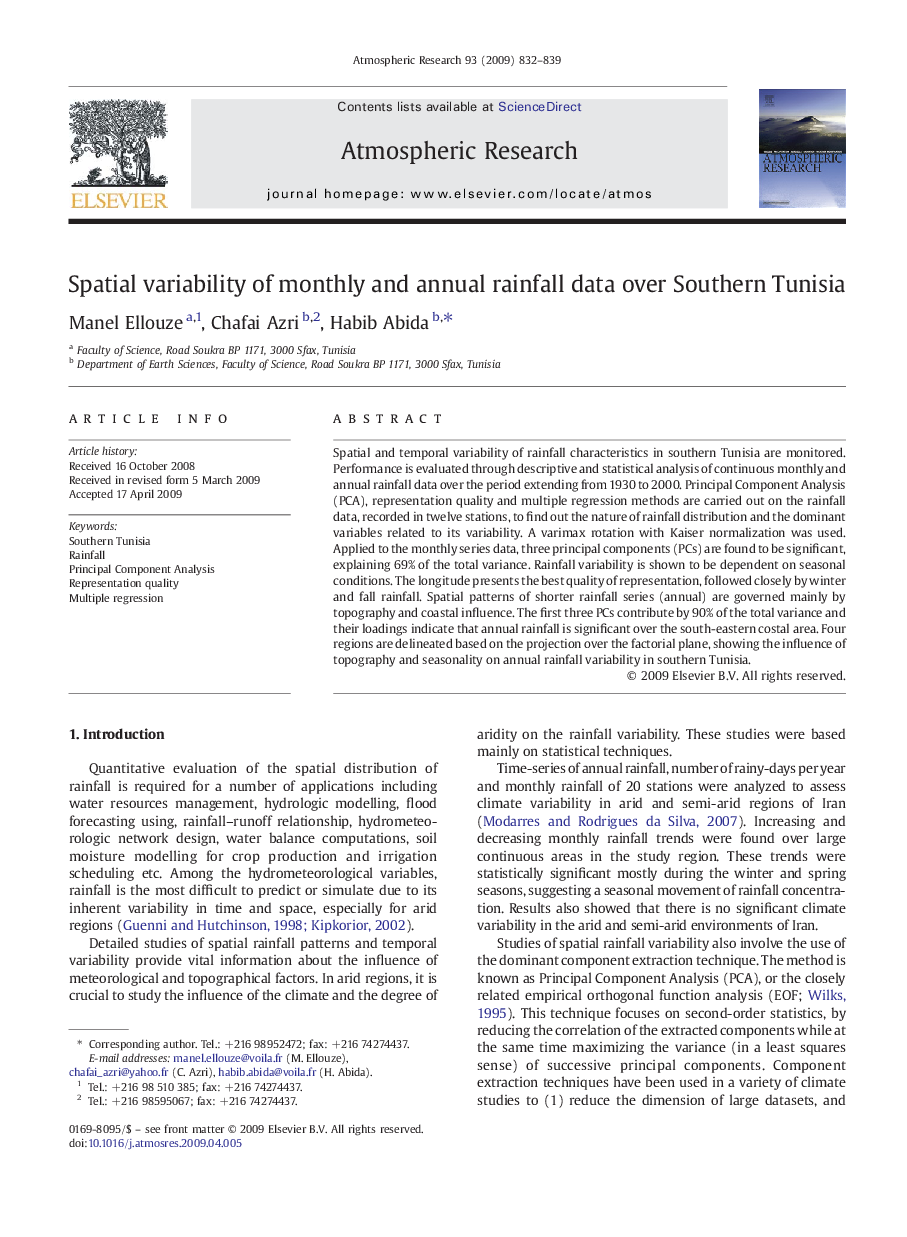| Article ID | Journal | Published Year | Pages | File Type |
|---|---|---|---|---|
| 4450958 | Atmospheric Research | 2009 | 8 Pages |
Spatial and temporal variability of rainfall characteristics in southern Tunisia are monitored. Performance is evaluated through descriptive and statistical analysis of continuous monthly and annual rainfall data over the period extending from 1930 to 2000. Principal Component Analysis (PCA), representation quality and multiple regression methods are carried out on the rainfall data, recorded in twelve stations, to find out the nature of rainfall distribution and the dominant variables related to its variability. A varimax rotation with Kaiser normalization was used. Applied to the monthly series data, three principal components (PCs) are found to be significant, explaining 69% of the total variance. Rainfall variability is shown to be dependent on seasonal conditions. The longitude presents the best quality of representation, followed closely by winter and fall rainfall. Spatial patterns of shorter rainfall series (annual) are governed mainly by topography and coastal influence. The first three PCs contribute by 90% of the total variance and their loadings indicate that annual rainfall is significant over the south-eastern costal area. Four regions are delineated based on the projection over the factorial plane, showing the influence of topography and seasonality on annual rainfall variability in southern Tunisia.
